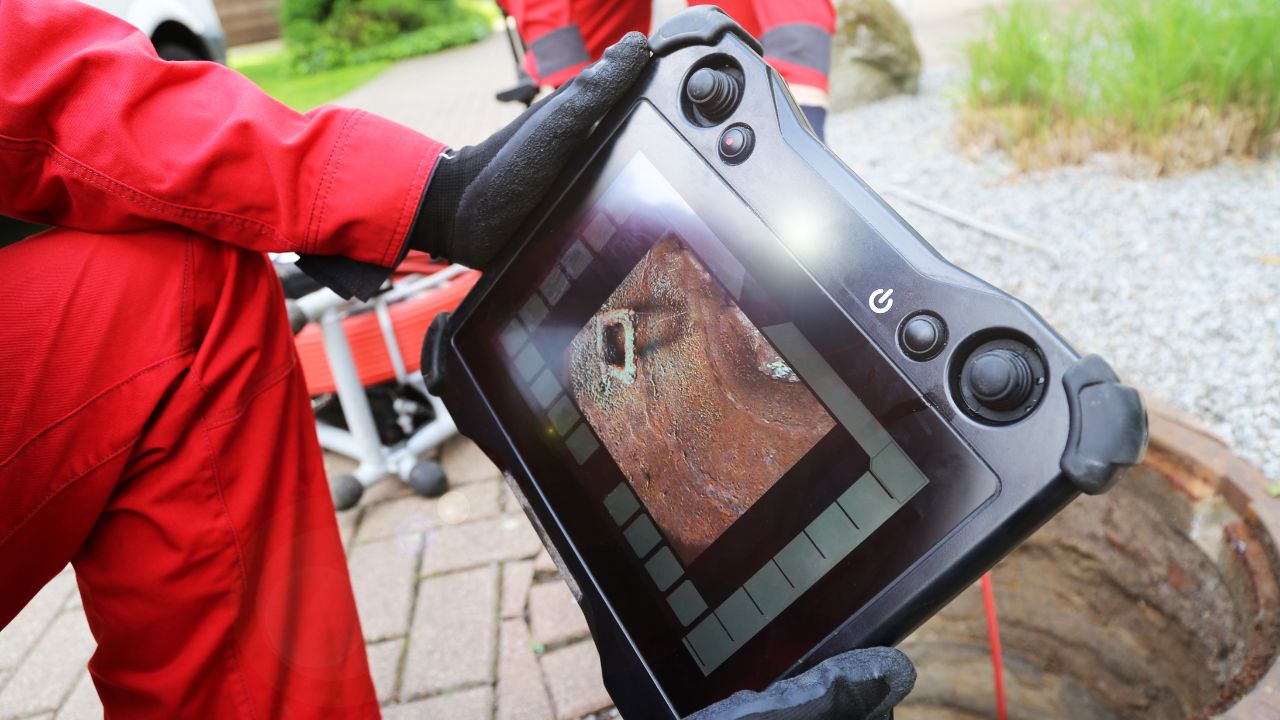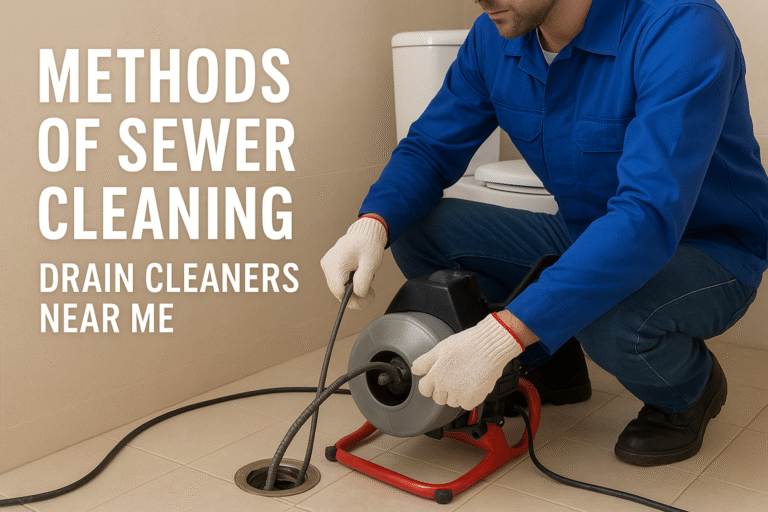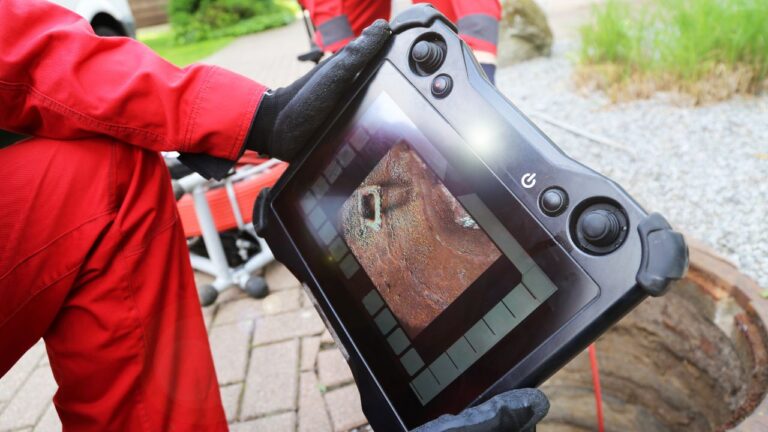
A slow-draining sink or a completely clogged shower is a frustrating reality for many Los Angeles homeowners. Before you panic or reach for the harshest chemical cleaner on the shelf, it’s helpful to know which drain unblocker methods are most effective. Some clogs can be handled with simple DIY tricks, while others demand the power of professional tools.
Navigating the world of drain cleaning can be confusing. To protect your pipes and effectively clear a blockage, you need the right approach for the right problem. This guide breaks down seven of the best drain unblocker methods, from simple home remedies to advanced professional techniques, helping you decide when to tackle it yourself and when to call in the experts.
DIY Drain Unblocker Methods
For minor clogs, especially those caused by recent buildup of hair, soap scum, or food particles, a do-it-yourself approach can often resolve the issue. Here are a few reliable methods to try first.
1. The Boiling Water Flush
This is the simplest method of all and can be surprisingly effective for grease-based clogs, common in kitchen sinks. Grease and fat from cooking can solidify in your pipes, creating a sticky trap for other debris. Hot water can help melt and flush it away.
- How it Works: Boil a large pot of water. Carefully and slowly pour the boiling water directly down the drain. Pour it in two or three stages, allowing the hot water to work for a few seconds between each pour.
- Pros: Incredibly simple, free, and chemical-free.
- Cons: Only works on grease or soap-scum clogs. It is not safe for PVC pipes, as boiling water can soften or warp the joints. Use very hot tap water instead if you have PVC pipes.
2. Baking Soda and Vinegar
This classic fizzy combination is a great natural alternative to harsh chemical cleaners. The reaction between the acidic vinegar and alkaline baking soda creates a bubbling action that can dislodge minor clogs from hair, grime, and food buildup.
- How it Works: Pour about one cup of dry baking soda down the clogged drain. Follow it with one cup of white vinegar. The mixture will immediately start to fizz and bubble. Plug the drain and let it sit for at least an hour (or even overnight for tougher clogs). Finally, flush the drain with hot water.
- Pros: Safe for all types of pipes, environmentally friendly, and uses common household items.
- Cons: Only effective for minor organic blockages. It will not work on solid obstructions or severe clogs deep in the line.
3. The Trusty Plunger
A plunger is a must-have tool in every home. It works by creating a seal around the drain and using pressure—both suction and compression—to dislodge a blockage. It’s important to use the right type of plunger: a cup plunger for sinks and showers, and a flange plunger for toilets.
- How it Works: Ensure there is enough water in the sink or tub to cover the bell of the plunger. Place the plunger over the drain to create a tight seal. Vigorously push and pull for about 20-30 seconds. The pressure should be enough to break up the clog.
- Pros: Highly effective for many types of clogs, inexpensive, and reusable.
- Cons: Requires some physical effort and can be messy. It may not reach clogs located deep within the plumbing lines.
4. A Handheld Drain Snake
For clogs that the plunger can’t fix, a handheld drain snake (or “zip-it” tool) is the next step up. These are small, flexible tools that you can buy at any hardware store. They are inserted into the drain to physically grab and pull out obstructions like hair and soap.
- How it Works: Push the snake down the drain until you feel resistance. Rotate the handle to allow the tip to grab onto the clog (usually a clump of hair). Slowly pull the snake back out, bringing the blockage with it.
- Pros: Directly removes the source of the clog rather than just pushing it further down. Inexpensive and effective for clogs near the drain opening.
- Cons: Limited reach (usually only a few feet). It can be difficult to maneuver around sharp bends in pipes.
Professional Drain Unblocker Methods
When DIY solutions fail, or if you have multiple drains clogging at once, it’s time to call a professional. Plumbers have access to powerful tools and expertise to handle serious blockages safely. These drain unblocker methods in Los Angeles are the gold standard for restoring flow.
5. Professional Drain Augers (Rooters)
This is the motorized, heavy-duty version of the handheld snake. A professional drain auger, or rooter machine, has a long metal cable with a rotating cutting head. It’s powerful enough to cut through dense obstructions deep within your plumbing system, including invasive tree roots.
- How it Works: A plumber feeds the cable into the pipe until it reaches the clog. A motor rotates the cable, and the specialized blade on the end breaks apart, cuts through, or latches onto the blockage to clear the line.
- Pros: Extremely effective for severe clogs and can reach far into the main sewer line. Different attachments can cut through everything from solid objects to tree roots.
- Cons: Can damage old or fragile pipes if not operated by a skilled professional. It solves the immediate clog but may not fully clean the pipe walls.
6. Hydro Jetting
Hydro jetting is the most powerful and comprehensive drain cleaning solution available. It involves using a high-pressure hose to blast water through the pipes, effectively scouring them clean. This method doesn’t just break up a clog; it removes years of accumulated buildup.
- How it Works: A specialized nozzle shoots water at pressures up to 4,000 PSI. This powerful stream cuts through the toughest blockages, including hardened grease, scale, and dense tree roots, while simultaneously cleaning the entire diameter of the pipe.
- Pros: Restores pipes to a like-new condition by removing all buildup. It is a long-term solution that prevents future clogs. Safe for all types of pipes when performed by a trained technician.
- Cons: It is the most expensive method and requires a professional. A pre-inspection with a camera is often needed to ensure the pipes can withstand the pressure.
7. Video Camera Inspection
While not a clearing method itself, video inspection is a critical part of the professional process. A plumber feeds a waterproof, high-resolution camera into the pipe to see exactly what is causing the clog and where it is located.
- How it Works: The real-time video feed allows the plumber to identify if the problem is grease, roots, a foreign object, or even a broken pipe.
- Pros: Provides a precise diagnosis, eliminating guesswork. It ensures the correct drain unblocker methods in Los Angeles are used, saving time and money and preventing unnecessary damage to pipes.
- Cons: This service adds to the overall cost, but the diagnostic accuracy it provides is invaluable for complex plumbing issues.
Expert Drain Cleaning in Los Angeles
While DIY methods can be effective for minor issues, stubborn or recurring clogs require professional attention. Ignoring a serious blockage can lead to pipe damage, water backups, and costly repairs.
If you’re looking for a reliable drain cleaner near me, you can contact Map Plumbing and Rooter. Their expert technicians are equipped with the industry’s best tools, from professional-grade augers to high-pressure hydro jetters. They provide fast, reliable, and thorough drain cleaning services to get your home’s plumbing back in perfect working order. If you’re dealing with a clog that won’t quit, don’t wait.







